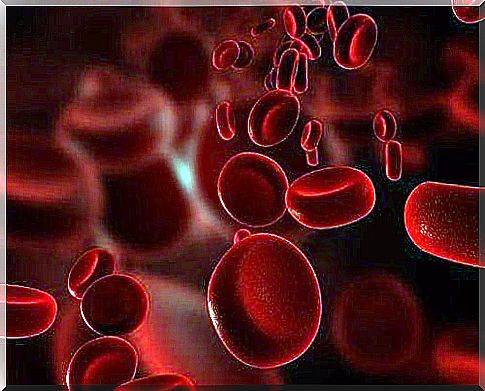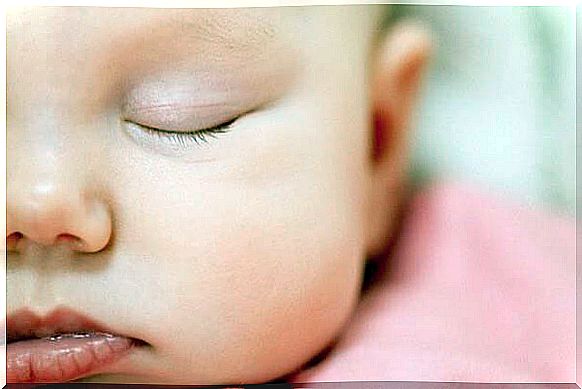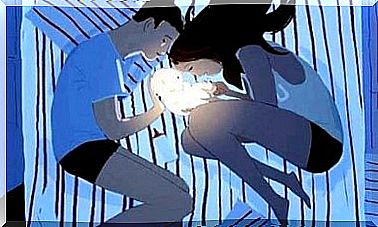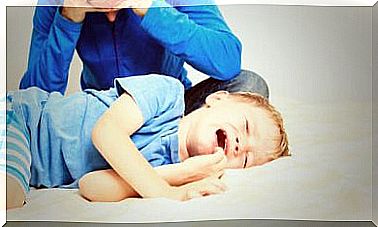What Will My Child’s Blood Group Depend On?

Surprisingly enough, blood group is not genetically determined at birth based on the contributions of both parents. To know it, a blood sample must be taken from the child and the subsequent analysis carried out.
This is classified according to the presence or absence of antigens on the surface of red blood cells. The presence or absence of certain antigens is what determines to be in one group rather than the other.
There are three types of antigens (A, B, and AB) that make up four different blood groups. Furthermore, group 0 is characterized by the absence of antigens on the surface of red blood cells.
Therefore, our genotype is composed of two possible expressions of this gene, which gives the following possible combinations: AA, AB, AB, A0, B0 and 00. On the one hand, genes A and B are dominant (they are expressed) and, on the other hand, gene 0 is recessive (it is expressed only in the presence of a second gene 0).
2 large groups: AB0 and Rhesus
There are more than 20 different types of possible incompatibilities that are formed by two large groups: the ABO system and the Rh factor. This is a description of each of them.
AB0 system
The incompatibility, in this case, is usually milder and can appear already in the first pregnancy. There are three different antigens: A, B and 0, which will determine the groups that can be A, B, AB or 0.
People who have antigen A on the surface of their red blood cells express antibodies —molecules that attack— against B. Those in group B do the reverse and have antibodies against group A.
People from group 0 have neither A nor B on their surface and, therefore, will be able to make antibodies against A and B. Finally, those who are from group AB, having both antigens on their surface, will not produce antibodies or A nor B.
For example, people who have the wall made up of type A antigens will be able to make antibodies against type B. It would not make sense for them to make antibodies against A, because they would be attacking themselves.

Rh factor
A person’s blood group is also determined with the Rhesus factor indication which indicates the presence or absence of a particular antigen on red blood cells. The Rhesus factor can be positive (Rh +) or negative (Rh-).
The most frequent problems of maternal-fetal incompatibility (and therefore mother-father) depend mainly on the Rh factor.
When both parents are Rh negative, regardless of blood group, the child will necessarily have an Rh negative blood group. In other cases, the little one may have a blood group with a Rhesus + or -.
How is the blood group inherited?
Blood groups are inherited from parents: half from the mother and half from the father.
The information of the ABO system group is controlled by a single gene, where A and B are dominant – as the dark gene dominates over the blonde or the gene for dark eyes over the light, in this case A or B they dominate over the O. Thus, both an A0 person and an AA will be from group A.

Incompatibility between groups
When there is incompatibility, the baby’s cells are attacked by the mother’s antibodies; these are destroyed and can lead to anemia and hyperbilirubinemia. It can be less severe in cases of incompatibility by the AB0 system and severe in the case of Rh.
It is rare that an incompatibility between groups occurs, although it can happen in the following cases:
- Mother with group A, B or AB positive: no problem, it is not necessary to know the father’s group.
- Mother with group 0 positive: it is advisable for the father to perform the test because, if it were A, B or AB, the child at birth could have jaundice due to AB0 incompatibility. This is not a serious pathology, but knowing the father’s group speeds up the time of diagnosis.
- If the group is the same in both parents, there are no problems for the baby.
In short, you must bear in mind that the test to know the blood group is very important in pregnancy. This serves to find incompatibilities in the couple that can cause problems for the fetus. Therefore, prevention is of vital importance.










